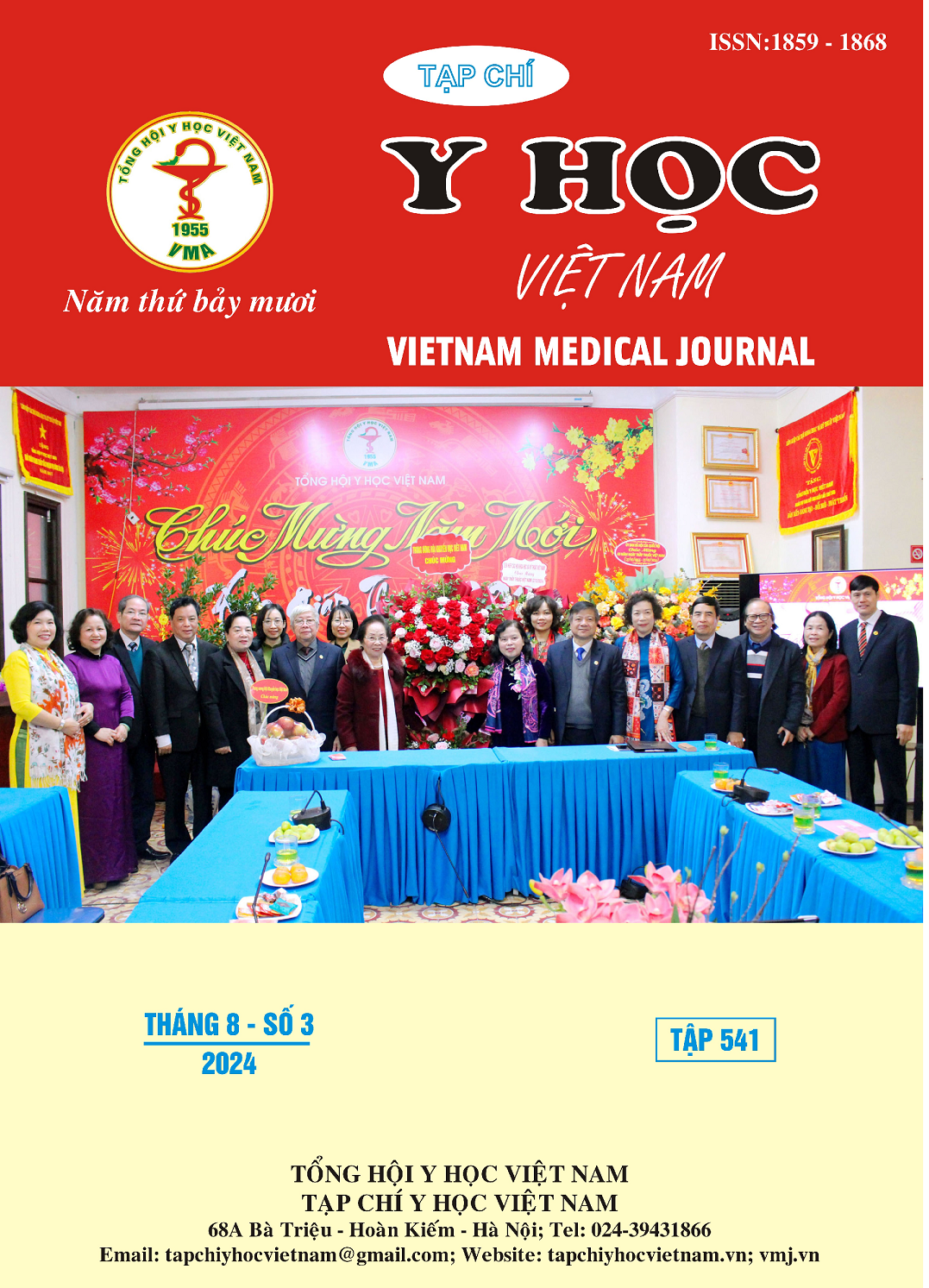ASSESSMENT OF CHANGES IN ASTIGMATISM BEFORE AND AFTER SURGERY PRIMARY PTERYGIUM BY PTERYGIUM EXCISION WITH A CONJUNCTIVAL AUTO GRAFT
Main Article Content
Abstract
Background: Pterygium is a common disease in ophthalmology, one of the important causes of vision loss and blindness. The disease is geographically unevenly distributed, common in tropical and subtropical countries with hot and humid climates and high sunshine duration. In Vietnam, according to statistics from the Central Eye Hospital (1996), the proportion of people with dream disease is 5.24% of the total population surveyed. Pterygium causes contraction of the ocular surface, causing astigmatism and affecting the patient's vision. Purpose: Describe the clinical characteristics of primary pterygium and evaluate the change in astigmatism before and after pterygium surgery using autologous conjunctival graft pterygium surgery. Method: Prospective study and description of a series of cases. The patient was diagnosed with primary pterygium from grade II to IV for examination and indicated for surgical treatment of pterygium at the Department of Ophthalmology, Tay Nguyen University Hospital from December 2022 to March 2023. There is an information collection form used to record research variables at the time points before surgery, 1 week, 1 month and 3 months after surgery. Results: The study included 70 eyes, average age was 56.7 ± 8.9 years, women had the disease more often than men (72.86%). The degree of pterygium in the study was mainly grade II pterygium with 54 eyes (with a rate of 77.14%). The average length of pterygium invading the cornea in the horizontal direction is 2.41 ± 1.18 mm. The average astigmatism recorded in the study was 2.31 ± 1.21 D. Immediately after surgery 1 week, the average astigmatism decreased to 0.93 ± 0.48 D. On average The level of astigmatism after surgery 3 months was 0.82 ± 0.41 D. The patient's vision increased significantly compared to before surgery, 60.97% improved vision after surgery from 1 - 2 rows on the chart. LogMAR visual acuity. Conclusion: Autologous conjunctival graft pterygium surgery can help reduce astigmatism caused by pterygium and improve the patient's vision.
Article Details
Keywords
Pterygium, astigmatism, autologous conjunctival graft surgery.
References
2. Maheshwari. S (2003). “Effect of pterygium excision on pterygium induced astigmatism", Indian J Ophthalmol, p. 187 - 188.
3. Hội Nhãn khoa Mỹ (2004)”Bệnh học mi mắt, kết mạc và giác mạc” (Nguyễn Đức Anh dịch), Nhà xuất bản Đại học Quốc gia Hà Nội, tr.141 – 143.
4. Huỳnh Tuấn Cảnh và Lê Minh Thông (2004), “Khảo sát độ loạn thị giác mạc trung tâm trên bệnh nhân mộng thịt bằng giác mạc đồ”, Luận văn Thạc sĩ, Đại học Y Dược thành phố Hồ Chí Minh.
5. Lawan A, Hassan S (2018), “The astigmatic effect of pterygium in a Tertiary Hospital in Kano, Nigeria”. Ann Afr Med. 2018 Jan-Mar;17(1), p. 7-10.
6. Eliya Levinger (2020), “Posterior Corneal Surface Changes After PterygiumExcision Surgery”, Clinical Science, p. 2 – 3.
7. Xu, W., Li, X (2024), “The effect of pterygium on front and back corneal astigmatism and aberrations in natural-light and low-light conditions”, BMC Ophthalmol 24, p. 7.
8. Mohd Yousuf MS (2004), “Role of pterygium excision in pterygium induced astigmatism". JK pratitioner, pp. 91-92.
9. E. Shelke, U. Kawalkar (2014), “Effect of Pterygium Excision on Pterygium Induced Astigmatism and Visual Acuity”, International Journal of Advance Health Science, 1, pp. 1 – 3.
10. Pere Pujol Vives MD, AmeliaMaria de Carvalho Mendes MD, Gemma Julio Mora BS, PhD, Sara Lluch Margarit BS, PhD, Dolores Merindano Encina BS, PhD & Imma Sola Garcia OD (2013), “Topographic corneal changes in astigmatism due to pterygium’s limbal-conjunctival autograft surgery”, J Emmetropia, pp. 13 – 18.


